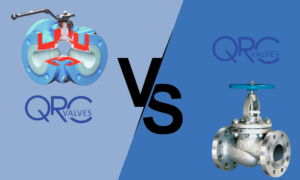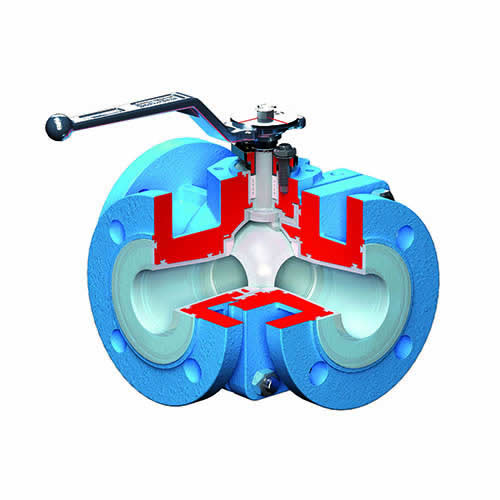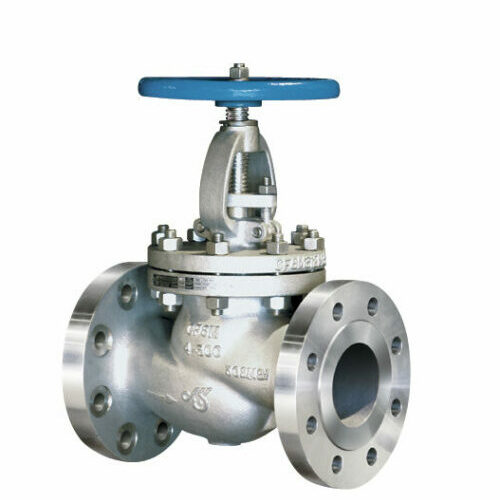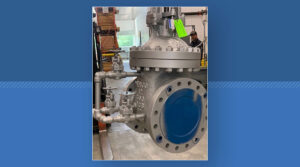
Ball Valves vs. Globe Valves
Valves are mechanical or electro-mechanical devices commonly found in a myriad of industrial processes, manufacturing, and maintenance operations. These devices regulate the movement of fluids (liquid, air, gas, etc) via pipes and/or tubes, as well as from tanks or other containers. Moreover, these devices are primarily classified according to their function, design, and size.
Among all types of valves, the ball valve and globe valve are two of the most used valves in the industrial industry. In this article, we will learn about the advantages and disadvantages of both the ball valve and globe valve, as well as a comparison between the two types of valves.
Ball Valve Advantages and Disadvantages
The ball valve provides a quarter-turn operation to open or close. This conventional type of valve consists of a hollow rotary ball or disk, usually the size of the pipe, and a stem that connects it to the lever. The hollow ball and the lever of the valve rotate similarly and are parallel to each other, allowing the flow of fluids in the inlet and outlet in the valve body. Ball valves are used in any industrial applications that require fluid flow shut off.
Advantages
Generally, ball valves operate with efficiency and a great deal of durability. As such, they tend to be cost-effective, low maintenance, and usually a durable choice for the savvy operator.
With the hollow rotary ball mechanism, the ball valve provides low-pressure drop and high flow capacity. Disturbances in the flow of fluids such as turbulence and resistance are minimal. Aside from that, ball valves also provide a bubble-tight seal with little torque and lack the need for routine lubrication.

Generally, ball valves provide high durability. They can provide ten-plus years of reliable use when fit to the right application. Moreover, materials selection in manufacturing ball valves enables them to withstand high pressure and lessens the wear due to environmental conditions such as corrosion and temperature.
Compared to the cost of ball valves vs a globe valves, it is extremely affordable. In addition, ball valves are a cost-effective option due to their lower maintenance requirements. This mainly derives from the quarter-turn mechanism of the ball valve. This mechanism makes it less prone to wear and tear. Another reason is that the use of a pivot concentrates all friction forces to one part of the valve, thus conserving the other parts. Moreover, ball valves typically weigh comparably little and take up a small footprint vs. globe valves.
Disadvantages
The ball valve’s propensity to blockage, poor throttling capacity and space considerations are reasons that an engineer might wish to specify another valve.
It is not recommended to use ball valves on thick fluids such as slurries. Any thick fluid that passes through the ball valves may solidify, clog the flow and pile up in the cavities of the valve. This requires more maintenance and in the worst case scenario may render the valve inoperable and require replacement.
Ball valves should only be utilized in either a completely open or fully closed state and should not be used for long-term throttling. The partially exposed seat of the ball valve may be vulnerable to degradation and deformation in a throttling position due to high-velocity flows. For this reason, continuous throttling applications should never rely on a ball valve.
Since the mechanism involves a quarter-turn handle, engineers should consider available space prior to specifying a ball valve. An exposed handle in an area of egress or in the path of other equipment may create a hazard or operability issue.
Globe Valve Advantages and Disadvantages
The globe valve provides a multi-turn valve design starts, stops, and regulates the flow of fluids. The design is based on a disk, also called the plug, which lowers onto a seat, gradually restricting the flow as the valve closes. Globe valves are primarily used in industrial applications that require fluid throttling vs ball valves that are not generally recommended for throlling. One important feature is the valve seat orients parallel to the direction of flow.
Advantages
Globe valves provide good shutoff capability, good throttling capability, high reliability, and a variety of flow configurations.

The globe valve’s plug or disc adjusts from fully open to fully closed to match the needed flow rate for a specific application, making them a great choice for precise regulation control. The flow restriction through the valve increases with the distance between the plug and the seat in the body.
Since globe valves find service in partially open configurations, they provide ideal throttling capabilities. Moreover, these valves are easy to maintain and resurface the seats and are specifically designed for throttling operation.
Globe valves travel a short distance during operation. Thus, fewer turns are required to fully open and close the plug or the disc. This saves time and wear on the valve parts. In a well-designed globe valve, high reliability ensues.
The glove valve provides three primary body designs (Tee, Angle, and Wye). Each body design provides a different flow path.
Tee is the most common type of globe valve. Angle globe valves can handle the “slugging effect” with its inlet and outlet at a 90° angle allowing fluid to flow in a single 90° turn. Wye valves have a 45° angle between the seat and stem providing a straighter flow path when fully open. This straight flow path translates into the lowest flow resistance among the three designs.
Disadvantages
Some disadvantages that the engineers must consider when specifying a globe valve are the uni-directional requirement, high-pressure drop, and heavy weight.
The unidirectional requirement of globe valves means they can only start, stop and regulate the fluid flow in one direction.
Using globe valves in industry applications often results in high-pressure drops. Globe valves are specifically designed to change of direction of flowing fluid, thus increasing pressure drop. This pressure drops further increases during throttling applications.
Compared to other valve types, globe valves usually provide heavier weight and bulk. Subsequently, this requires greater force or a larger actuator to operate its mechanism.
Ball Valve vs. Globe Valve
After extensively discussing the advantages and disadvantages of using Ball and Globe valves in industrial processes, let’s consider these factors and visit the table that compares key selection parameters.
| Parameter | Ball Valve | Globe Valve |
| Main Function | Designed primarily for shut-off and commodity-type flow applications. | Designed for throttling action, such as regulating the flow of fluid. |
| Operating Mechanism | Bidirectional. The stem connects to a lever which is easier to operate with its 90° quarter-turn mechanism. | Unidirectional. The stem connects to an external handwheel which moves the plug for fluid flow regulation. |
| Visual Detection | The position of the lever allows for the visual detection of the open or closed condition. The hollow ball and lever move in a parallel fashion. | Despite being unidirectional, it is tough to detect the flow regulation and its open and closed state. |
| Durability | Ball valves are generally more durable and less susceptible to damage. | Globe valves are generally less durable and more prone to leakage and cavitation. |
| Cost | With its basic mechanism, it is typically less expensive than a globe valve. | With its body design and bulkiness, it is usually more expensive than a ball valve. |
| Common Industrial Applications | Potable water systems, Oil and gas, Flow regulation, Manufacturing processes | Cooling water systems, Fuel oil systems, Feedwater, Chemical feed systems, Steam vents and drains |
A ball valve and a globe valve both control fluid flow, but their distinct designs suit various uses. Ball valves are simple to operate and inexpensive, and they provide an easy way to identify the valve’s opening status. Despite its excellent shut-off mechanism, it regulates flow poorly.
On the other hand, globe valves may precisely control the flow and have great flow regulation capabilities yet are less convenient to use than other types of valves.
Which is best? There’s no right answer to this question. The answer to the ball valve vs. globe valve debate depends on its intended use. It is crucial to select the most suitable type of valve for the application to optimize performance and reliability.


